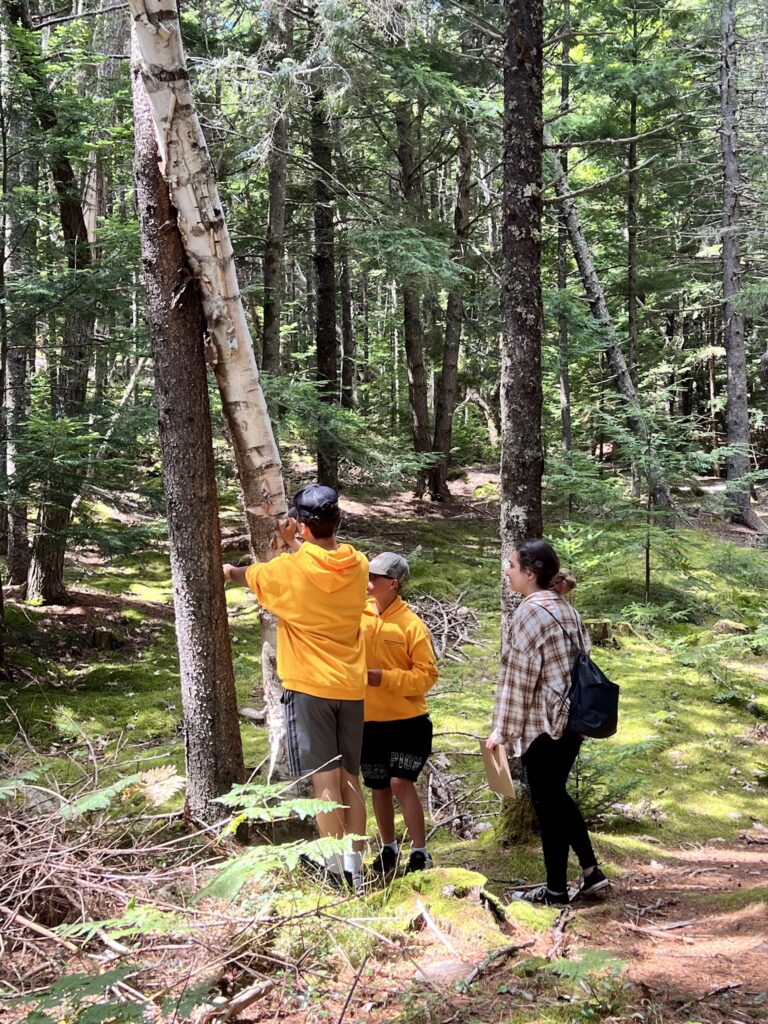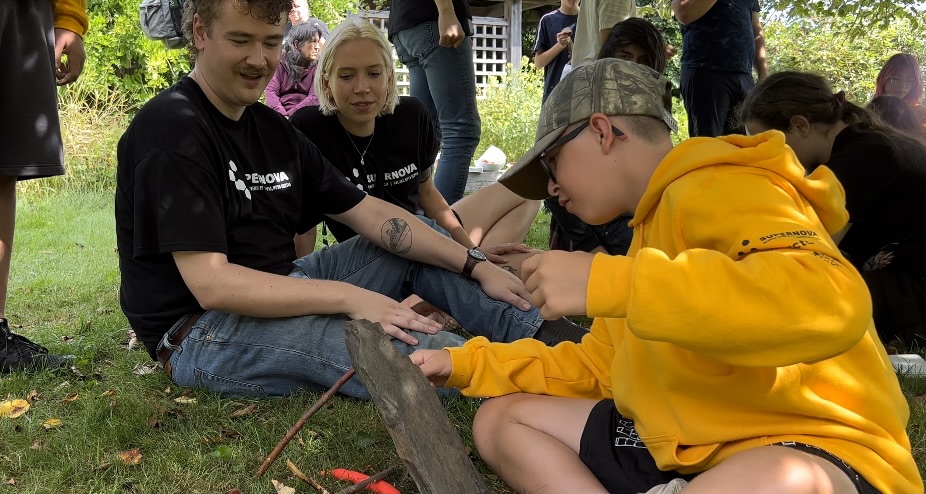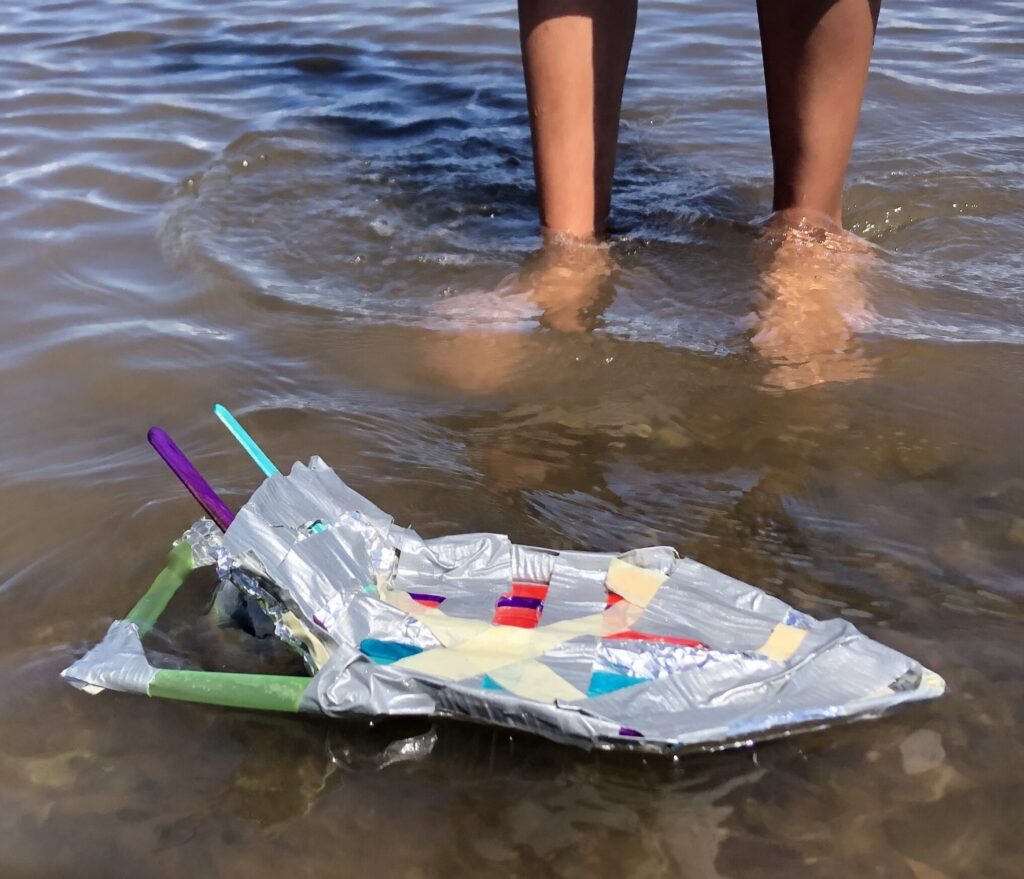Culturally Relevant STEM Education with SuperNOVA at Dalhousie University
June 9, 2023
June is National Indigenous History Month, a time to reflect on the unique histories, cultures, contributions and strengths of First Nations, Inuit and Métis Peoples. Throughout the month we will be featuring programs and partnerships from the East, South, West and North that highlight the importance we place on learning and integrating Indigenous Knowledge and cultures within our STEM outreach programs. Learn more about Actua’s commitments concerning this work.
An inside look into an Actua Network Member’s InSTEM Programming: SuperNOVA
Today on the blog we are featuring Actua’s Halifax-based Network Member, SuperNOVA at Dalhousie University. SuperNova has been engaging Indigenous communities with STEM in the Atlantic region for over 20 years. Spanning across five provinces of the Mi’kma’ki region including Nova Scotia, New Brunswick, P.E.I, Newfoundland and Labrador and parts of Quebec, SuperNOVA’s InSTEM programming provides hands-on STEM learning opportunities that are dedicated to enriching Indigenous communities and inspiring Indigenous youth to see themselves in STEM fields.
SuperNOVA delivers Actua’s National Indigenous in STEM (InSTEM) programming, which is designed to break down barriers to Inuit, Métis and First Nations youth engagement in STEM fields. These are barriers that, over time, have contributed to significant disparities in high school and post-secondary participation and completion rates among Indigenous youth. Guided by Actua’s Indigenous leadership team, InSTEM engages Indigenous youth in culturally relevant STEM experiences that build skills and confidence and allow participants to recognize and celebrate their existing cultural knowledge as Indigenous Peoples.
Enriching Youth Through Culturally Relevant Programming
Reaching numerous communities spanning across the Mi’kma’ki region, SuperNOVA engages with Indigenous youth in STEM in three ways: through day camps, an immersive land camp experience and through partnerships with schools and school boards. “In 2023, the program is set to double the number of youth engaged”, says Caitlin MacPhail, Partnership & Development Coordinator. “This year we’re expecting to reach over 600 Indigenous youth.”
Day Camps
This year, through week-long day camps, SuperNOVA is set to engage 11 Mi’kmaq communities and two Innu communities. Developed and delivered by undergraduate students from the university, most activities are designed to be interactive and provide youth with STEM experiences through hands-on learning.
SuperNOVA’s camp activities encourage youth to engage with their environment and promote teamwork with their peers. An example is boat building where youth collect materials from the community and use coding robots called spheros to launch and drive them on water, sometimes in the ocean itself.
Land Camps
To engage Indigenous youth in high school with STEM learning opportunities, SuperNOVA hosts immersive land camps that are open to all Indigenous youth across the province. This approach ensures that youth can benefit from the enriching experiences land camps provide. The land camps offer a unique teaching perspective by combining Indigenous ways of knowing with Western STEM practices. Elders and community members who work in STEM are invited to build connections with the youth that extend beyond camps and workshops. Youth are able to experience STEM through cultural activities that foster a sense of interconnectedness with the land and community. This includes activities like basket weaving, community mapping and ecology.
Ocean Data Project
Launched this spring, SuperNOVA’s latest initiative, the Ocean Data Project is one of the many transformational experiences for youth to engage directly with locally relevant STEM learning. In collaboration with Mi’kmaq schools in Nova Scotia, this project includes the installment of buoys in the ocean, which collect data. Youth then analyze that data to gain a deeper understanding of their local environment and its connection to global issues like climate change. By deploying buoys and collecting data, students can explore how it can be used to monitor and preserve the health of their community and environment.
“This project is a great way for students to learn about STEM and connect their learning to the community,” says MacPhail.“ It’s essentially happening in their backyard. In some cases, students may even be able to see the buoy from their classroom. We are really excited about this new learning opportunity.”
Instilling a Love of Learning and Inspiring Futures
Reigniting a love of learning is at the center of SuperNOVA’s programming. Youth are not only thrilled to be part of something special but they are also eager to explore new areas in STEM that may not be in their classrooms or communities.
“By engaging with communities across the region and exposing Indigenous youth to diverse opportunities in STEM, these programs open doors to fields they may not have known existed,” says MacPhail.
SuperNOVA strives to empower the youth participants to recognize their important role in STEM. Beyond the camps, SuperNOVA creates a foundation for continued exploration, encouraging students to keep learning, exploring and remaining curious.
The work that we're able to do in communities is really important because it helps to expose the youth to those different opportunities and different STEM fields that they may not know. In doing this we're able to help them see themselves and their place in STEM.
SuperNOVA is providing a world of hope and possibility to Indigenous youth. Through their programming, they awaken a renewed enthusiasm for learning. SuperNOVA supports Indigenous youth to see their potential and embrace their place as leaders in shaping their own futures. With each camp, each activity and each success story, SuperNOVA illuminates a path towards a brighter future, one where Indigenous voices and perspectives are cherished and celebrated.




